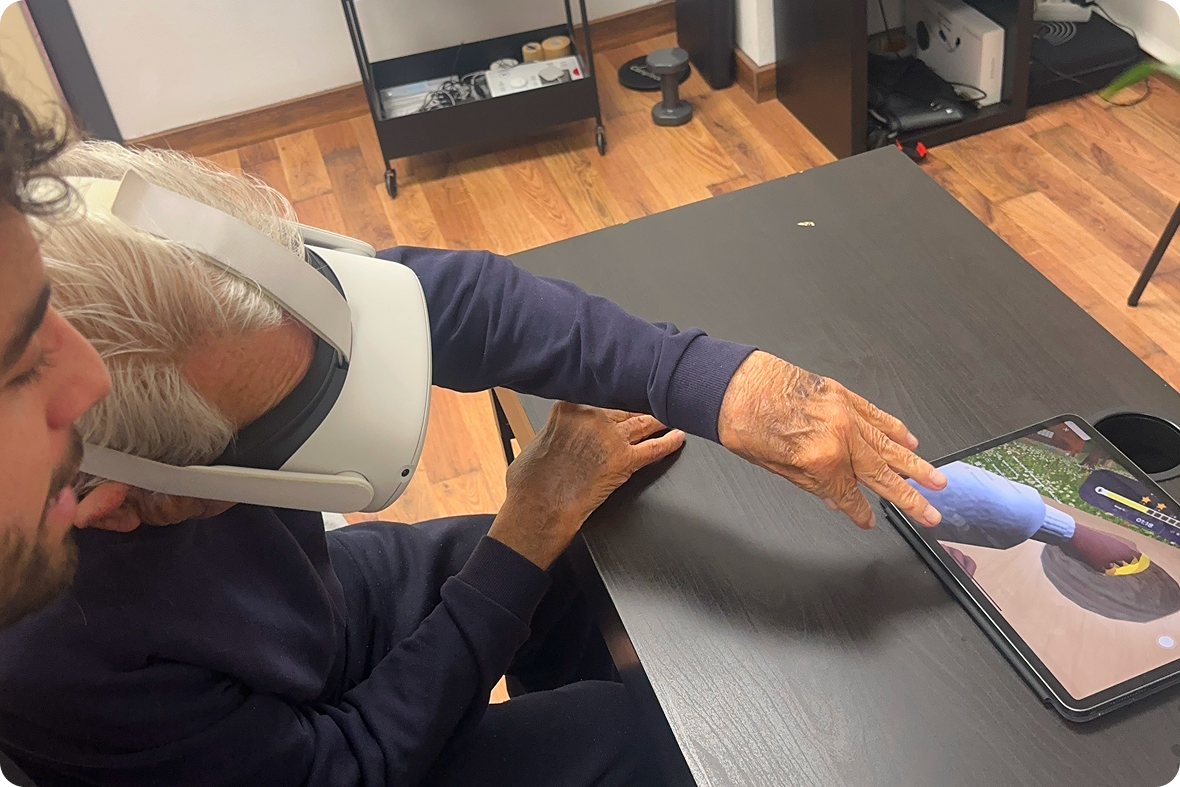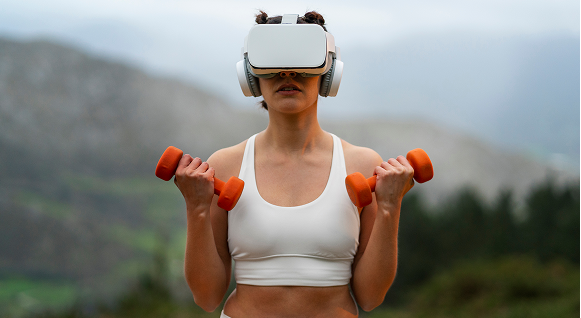Immersive Virtual Reality: A Revolution in Chronic Pain Management
Information extracted from: Guerra-Armas, J., Flores-Cortes, M., Pineda-Galan, C., Luque-Suarez, A., & La Touche, R. (2023). Role of Immersive Virtual Reality in Motor Behaviour Decision-Making in Chronic Pain Patients. Brain sciences, 13(4), 617. https://doi.org/10.3390/brainsci13040617
Table of Contents
- 1. Why is Virtual Reality effective in chronic pain?
- 2. Benefits of Virtual Reality in Chronic Pain
- 3. An essential tool in rehabilitation
Chronic pain affects between 20% and 33% of the world’s population (Treede et al., 2015), limiting the quality of life of those who suffer from it. As neuroscience and rehabilitation research advances, Immersive Virtual Reality (IVR) is positioned as an innovative tool for functional recovery and pain reduction.
Why is Virtual Reality effective in chronic pain?
Chronic pain is not only a physical sensation, but a complex experience that affects the relationship between the individual and his or her environment (Stilwell et al., 2019). From an enactive-biopsychosocial approach (Smrdu, 2022), it is understood that this type of pain alters sensorimotor decision-making capacity, generating limitations in movement and an increased perception of threat in the environment. This is where IVR comes into play.
Sensorimotor decision-making ability follows a four-step process (Weech et al., 2019; Indovina et al., 2018), in which IVR plays a key role:
1. Sensory stimulation: IVR provides visual and auditory stimuli that activate the brain’s sensory network.
Evaluation of the environment: The perception of the body and the environment is adjusted according to these stimuli, redefining the sense of security.
3. Motor response: If the virtual environment is perceived as safe, the patient feels more likely to move.
4. Motion-induced analgesia: Movement activates pain modulation pathways, which facilitates motor relearning and reduces negative pain expectancy.
Benefits of Virtual Reality in Chronic Pain
Various research has shown that IVR can intervene in different factors that perpetuate chronic pain (Sündermann et al., 2020), such as:
– Impaired multisensory integration: Pain perception may be influenced by prior sensory deficits (Catley et al., 2014). IVR helps modulate the sensorimotor network through visual and auditory stimulation, increasing activity in brain areas that inhibit pain.
– Distorted body perception: Our body image is constantly adjusted according to the stimuli received (Matamala-Gomez et al., 2019). With IVR, patients can experience their body virtually, modulating pain perception and promoting recovery.
– Movement difficulties: Fear of pain modifies movement planning and execution (Kantak et al., 2022). RVI acts as a visual feedback therapy, facilitating motor relearning and promoting exercise-induced analgesia.
– Pain memory and fear of movement: When pain is sustained over time, the brain generates a protective memory of pain that reinforces kinesiophobia (Timmers et al., 2019). IVR reduces fear of movement, decreasing anxiety and improving the patient’s functionality
An essential tool in rehabilitation
The potential of IVR for chronic pain rehabilitation is undeniable. By inducing neuroplastic changes and cortical reorganization, it allows patients to regain mobility, reduce pain and improve their quality of life.
If you are looking for an innovative solution based on scientific evidence to improve the recovery of your patients, Immersive Virtual Reality is the next step in the evolution of rehabilitation.
Discover how our technology can make a difference in your clinic or rehabilitation center.

You may be interested in...

How Immersive Virtual Reality Modifies Sensorimotor Uncertainty...
Interaction with our environment depends on the sensory information we receive and how our body responds to it. In people with chronic pain, this relationship….

The User Experience of Immersive Virtual Reality Induced Hypoalgesia
Immersive Virtual Reality (IVR) is revolutionizing pain management, offering an innovative, non-pharmacological alternative for adults and children…..



